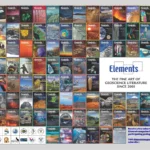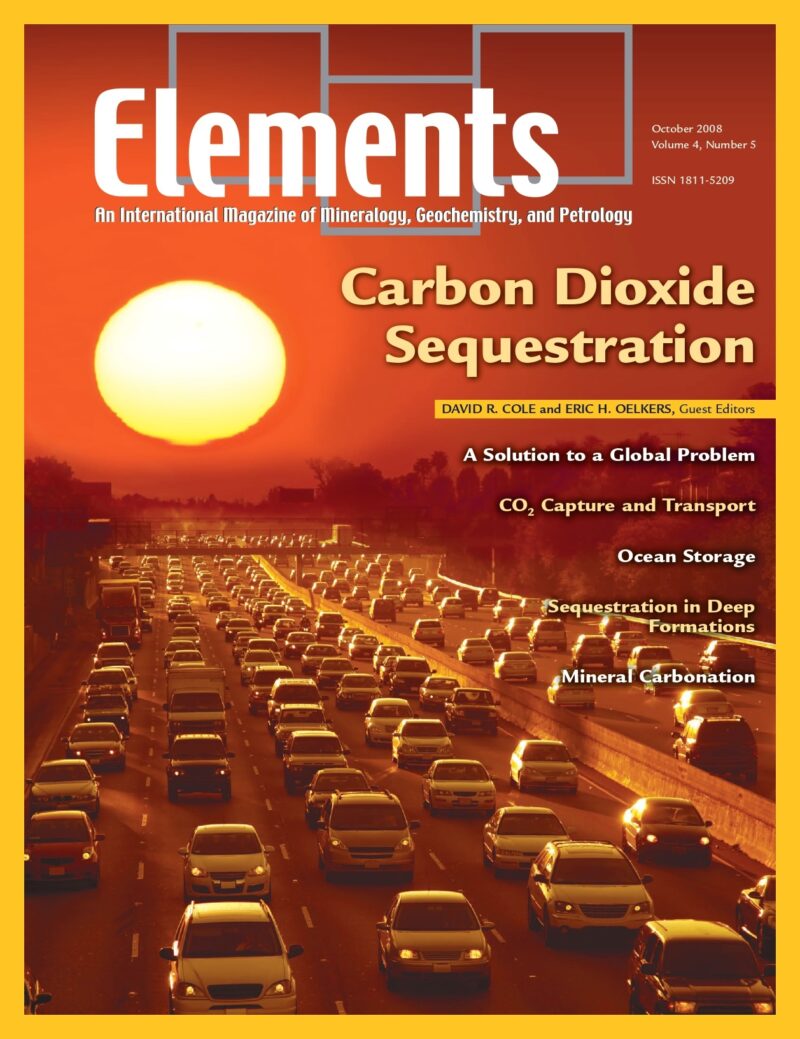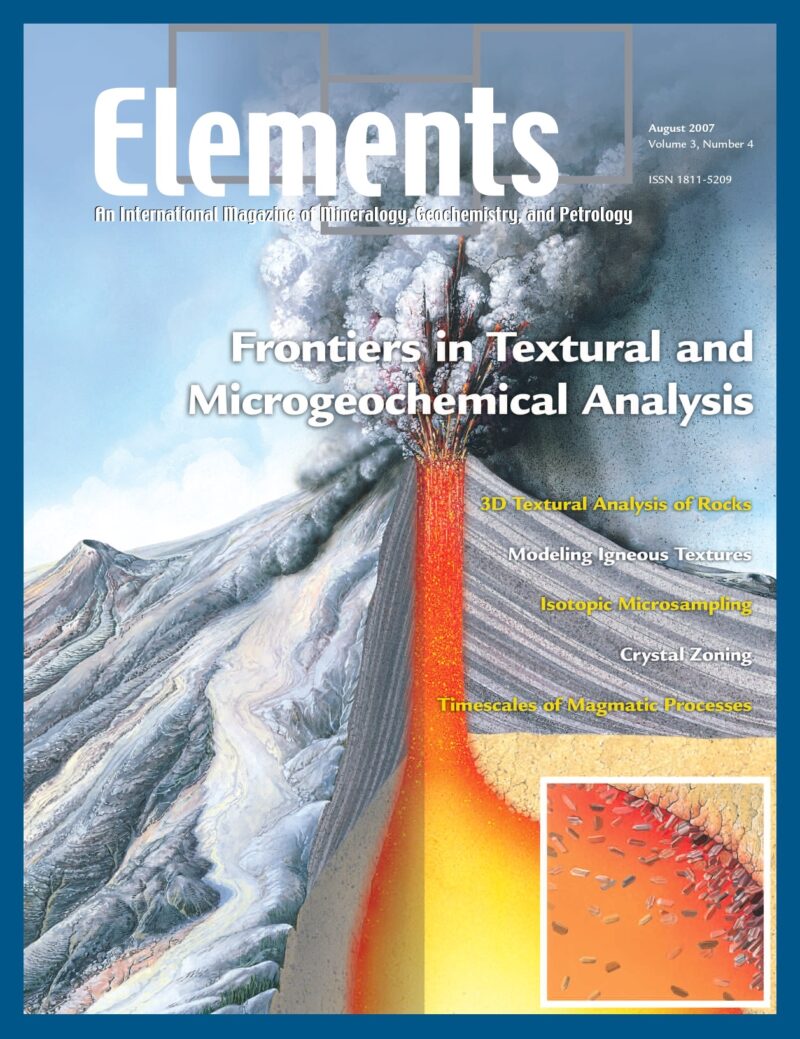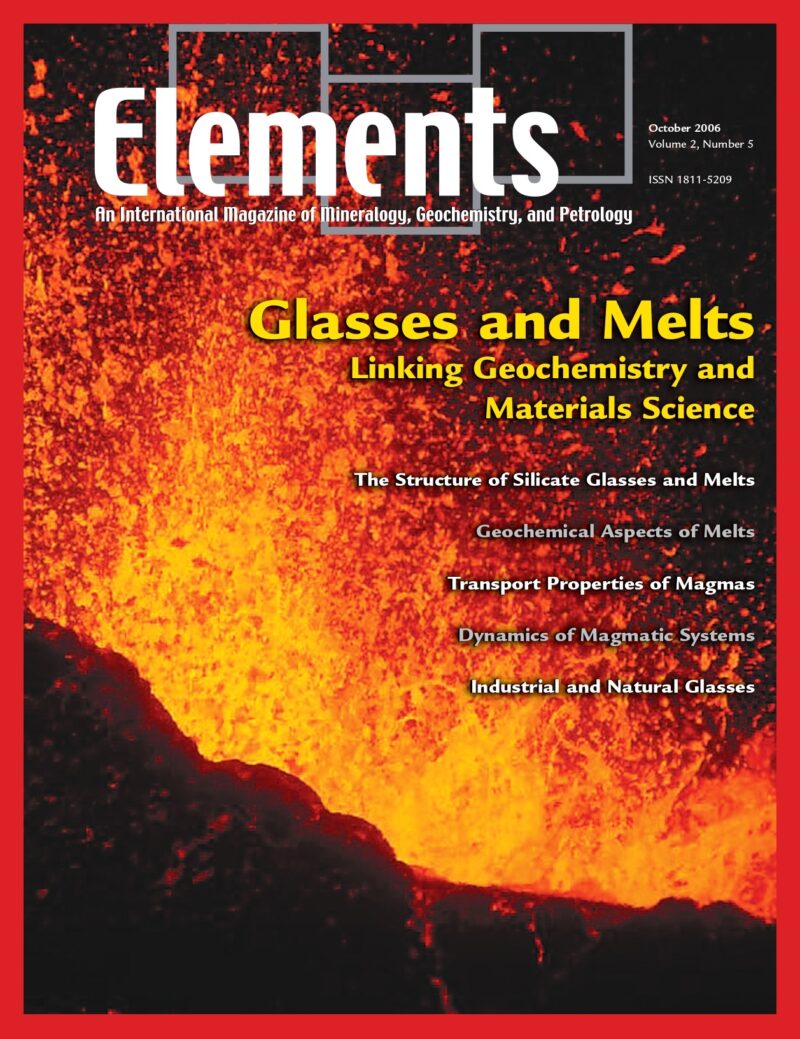
The Invisible Ocean: Hydrogen in the Deep Earth, August 2024, Vol. 20, No. 4
October 25, 2024
Elements Back Issues
October 26, 2024Behind and Beyond Luminescence Imaging, October 2024, Vol. 20, No. 5
$20.00
Luminescence-based optical or SEM images are increasingly used in Earth sciences research. Examples include formation and post-growth history of minerals from their internal textures, taking into account multiple interior regions of complex crystals. For such simple approaches it is actually unnecessary to understand the particular causes of emissions.
Behind and Beyond Luminescence Imaging
October 2024, Vol. 20, No. 5
Luminescence-based optical or SEM images are increasingly used in Earth sciences research. Examples include formation and post-growth history of minerals from their internal textures, taking into account multiple interior regions of complex crystals. For such simple approaches it is actually unnecessary to understand the particular causes of emissions. During the last decade, however, spectroscopic research has led to substantial progress in our understanding of the emissions of minerals. The main objective of this issue is to convince readers that luminescence is not at all restricted to interesting pictures that show “something,” but analysis of the emissions may bear a wealth of information on what exactly is observed. Luminescence spectroscopy has become a versatile, quantitative group of techniques whose successful applications virtually cover all geoscientific sub-disciplines.
Why You’ll Love Elements Magazine:
- Expert Contributors: Articles written by renowned researchers in the field of geoscience.
- Engaging Content: Join a community of readers who are passionate about Elements.
- Exceptional Quality: Each issue is printed on high-quality paper with stunning visuals and detailed illustrations that bring complex scientific concepts to life.
Order your copy of the October 2024 issue of Elements magazine today and explore Behind and Beyond Luminescence Imaging.
Related products
-
Carbon Dioxide Sequestration, October 2008, Vol. 4, No. 5
$20.00Storage of carbon in the subsurface involves introduction of supercritical CO2 into rock formations beneath the surface of the Earth, typically at depths of 1000 to 4000 meters. Although CO2 is a relatively benign substance, the volume being considered is large.
-
Frontiers In Textural And Microgeochemical Analysis, August 2007, Vol. 3, No. 4
$20.00Recent advances have been made in high-resolution in situ methods to image mineral growth patterns, analyse compositional and isotopic zonation, and improve our ability to visualize, study, and model rock textures in three dimensions. These advances provide a significant step forward in the understanding of how rocks form and the history they can tell us.
-
Glasses And Melts: Linking Geochemistry And Materials Science, October 2006, Vol. 2, No. 5
$20.00Geological interest in studying melts stems from early recognition that melts play a fundamental role in determining the physical and chemical behaviour of magmas and magmatic processes. However, due to the inherent difficulties associated with working at high temperatures, much of the geological research over the last 30 years has used quenched melts or glasses as proxies for melts themselves.




